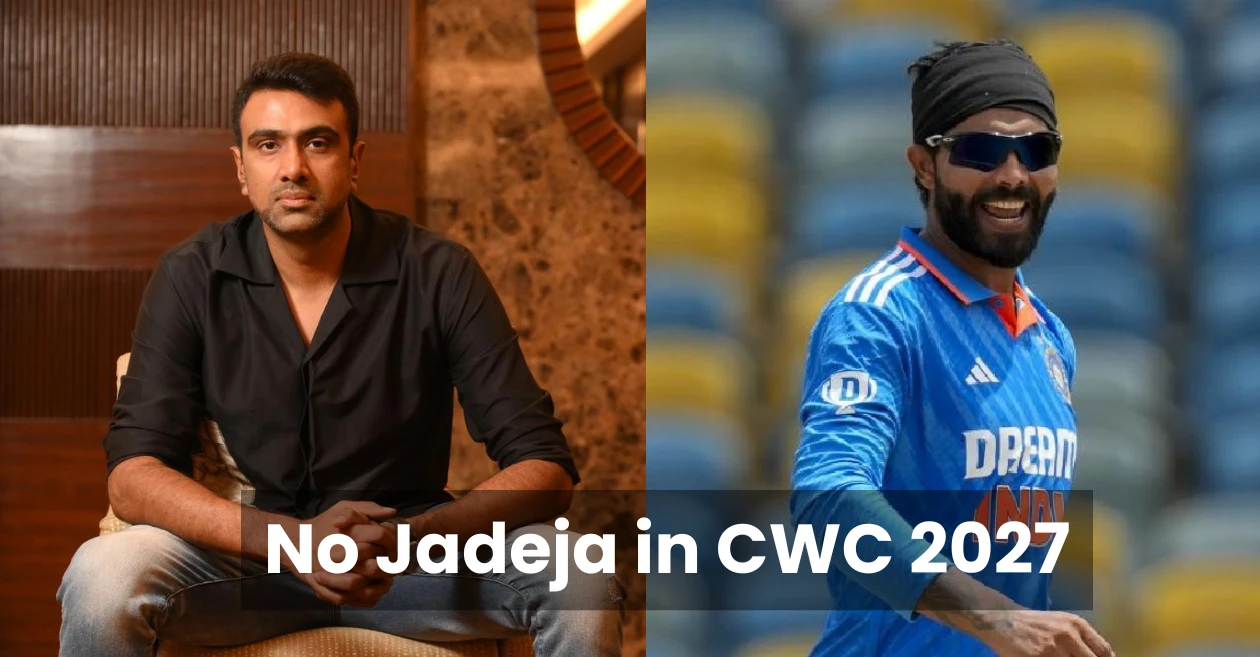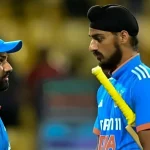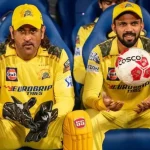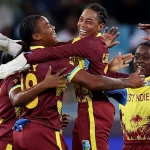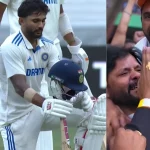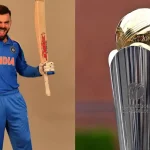The Indian cricket fraternity was abuzz this week as selectors unveiled the 15-member squad for the upcoming ODI series against Australia, but what made headlines wasn’t who made the cut — it was who didn’t.
The glaring absence of Ravindra Jadeja, one of India’s most seasoned and dependable all-rounders, has sparked a storm of speculation about his future in the 50-over format.
Adding weight to the conversation, senior off-spinner Ravichandran Ashwin offered a bold and candid perspective on Jadeja’s omission, suggesting that the move may signal the end of an era in Indian cricket. His remarks have opened up a deeper discussion about transition, selection policy, and the road ahead for Team India in the buildup to the 2027 ICC Cricket World Cup.
Ashwin’s Honest Take: “They Have Moved On”
Speaking on journalist Vimal Kumar’s YouTube channel, R Ashwin did not mince words when asked about Jadeja’s exclusion. The Tamil Nadu spinner, who has shared numerous memorable partnerships with Jadeja over the years — both on Indian soil and overseas — interpreted the move as a strong indicator of India’s long-term strategy.
“They have dropped Ravindra Jadeja. It is a clear direction that they are not looking at him for the next 50-over World Cup,” Ashwin said. “There are about 10 ODIs to go before the tournament. If you do not pick him now, when does he play? I think it’s clear that Axar [Patel] will play the next World Cup.”
Ashwin’s comments quickly went viral across cricketing circles, largely because they echoed what many observers had been hinting at — that India’s ODI blueprint is shifting toward youth, longevity, and future readiness.
His words also carried emotional weight. After all, few understand Jadeja’s value and impact better than Ashwin, his long-time spin partner in Tests. Together, the duo has formed one of India’s most successful spin pairings in modern cricket, combining over 700 Test wickets and countless match-winning spells across formats.
A Symbolic Omission: The End of an ODI Chapter?
While Ajit Agarkar, chairman of selectors, maintained during the post-announcement press conference that Jadeja “remains very much in India’s ODI plans,” the move tells a more nuanced story. The decision to leave out a player of Jadeja’s stature — fit, experienced, and in good form — suggests that the selectors are consciously looking beyond the present.
Jadeja, 36, has been a mainstay in India’s ODI setup for over a decade, with 204 ODIs, 2,747 runs, and 227 wickets to his name. His dual skills, electric fielding, and game awareness made him indispensable in limited-overs cricket. Yet, his exclusion from the Australia tour, coming barely months after he retired from T20Is, paints a picture of strategic phasing out rather than rotation.
In many ways, this mirrors the natural evolution seen in Indian cricket before every World Cup cycle. Veterans like Yuvraj Singh, Suresh Raina, and even MS Dhoni faced similar transitions when the management sought younger legs and fresher combinations.
For Jadeja, who recently played a crucial role in India’s Champions Trophy 2025 triumph — picking key wickets and contributing vital lower-order runs — the sudden sidelining feels abrupt, even harsh. But to Ashwin, the rationale is clear: India is already building for 2027, and the clock waits for no one.
Selectors Eye the Future: Axar, Sundar, and Kuldeep Take the Spotlight
The ODI squad for the Australia series underlines India’s forward-thinking approach. The three spinners selected — Axar Patel, Washington Sundar, and Kuldeep Yadav — represent a new generation of spin all-rounders who can adapt across conditions.
Each brings a specific advantage:
-
Axar Patel, 30, mirrors Jadeja’s bowling style but offers a slightly fresher physical profile. His batting has improved significantly, making him an asset at No. 7 or 8.
-
Washington Sundar, 25, is a modern-day cricketer — calm, versatile, and technically sound. His off-spin provides variety alongside Kuldeep’s left-arm wrist spin.
-
Kuldeep Yadav, who has enjoyed a resurgence in recent years, remains India’s premier strike spinner in white-ball cricket.
Together, they form a spin group that reflects balance, variation, and a future-ready mindset — qualities the management is keen to establish ahead of the next World Cup cycle.
Agarkar emphasized that the selection was based on “conditions and balance for Australian pitches,” where fast bowlers often dominate. Still, he acknowledged Jadeja’s stature, describing him as “a proven performer who remains on the radar.”
Yet, as Ashwin pointed out, the reality of modern cricket doesn’t allow for emotional decisions. With limited ODIs before the 2027 tournament, every squad announcement becomes part of a long-term roadmap.
Ashwin’s Perspective: A Pragmatic but Painful Reality
Ashwin’s analysis, though frank, comes from a place of deep understanding of cricket’s selection dynamics. Having experienced similar transitions himself — at times being in and out of limited-overs squads despite strong performances — he knows how ruthless the process can be.
“These are tough calls, but it’s part of a team’s evolution,” Ashwin added in his discussion. “India are clearly planning two or three years ahead. It’s not about form alone — it’s about preparing the next generation for the biggest stages.”
His comments underscore a reality that fans often overlook: selection isn’t just about the next series, but the next cycle. India’s management has learned, perhaps the hard way, from previous campaigns that delayed transitions can disrupt team balance closer to major tournaments.
By fast-tracking players like Axar and Sundar into regular ODI roles now, India ensures they gain the experience, exposure, and confidence required to handle high-pressure World Cup situations in 2027.
Jadeja’s Recent Form: Still Among India’s Best
What makes Jadeja’s omission harder to digest for many is that he hasn’t shown any visible dip in performance.
In 2025 alone, he has averaged 34 with the bat and maintained an economy rate below 5.2 with the ball in ODIs — numbers that place him comfortably among India’s top all-rounders. He was also one of the standout performers in India’s Champions Trophy campaign, particularly in the semi-final against New Zealand, where his crucial 3/38 broke the backbone of the Kiwi lineup.
His recent Test displays have also been superb, including match-winning contributions against England earlier this year. Physically, Jadeja remains one of the fittest cricketers in the Indian setup — quick between the wickets, sharp in the field, and reliable under pressure.
That’s why the selectors’ decision has triggered emotional reactions from fans and experts alike. On social media, hashtags like #JusticeForJadeja and #BringBackJaddu trended briefly after the announcement, reflecting how strongly supporters feel about his absence.
Transitioning Away from Legends: India’s New Reality
Cricket, however, is often cruel to its veterans. As the game evolves, so too do team strategies. With data-driven selection models, workload management, and the emphasis on long-term athleticism, even proven champions find themselves replaced sooner than expected.
India’s ODI team is undergoing a similar generational refresh, much like it did after 2011 and 2019. Just as Rohit Sharma and Virat Kohli emerged from the shadows of Tendulkar and Sehwag, today’s young core — featuring Shubman Gill, Ruturaj Gaikwad, and Washington Sundar — is being groomed to carry the mantle forward.
From that perspective, Jadeja’s exclusion looks less like an oversight and more like an inevitable step in evolution. The management’s decision to prioritize longevity and skill diversity over experience aligns with a global cricketing trend — where countries like Australia, England, and New Zealand have similarly phased out senior players well before major tournaments to prepare new leaders.
The Emotional Undertone: Ashwin and Jadeja’s Parallel Journeys
What adds poignancy to this story is the shared history between Ashwin and Jadeja. For over a decade, they have been India’s spin twin pillars — complementing each other’s strengths, rescuing innings from collapse, and turning matches with sheer guile.
Their chemistry extended beyond the field too, defined by mutual respect and silent understanding. Whenever one was questioned, the other often came to his defense. So when Ashwin comments on Jadeja’s exclusion, it resonates more deeply — not as an outsider’s observation, but as a teammate’s honest reflection.
In many ways, Ashwin’s own career mirrors Jadeja’s current phase. He, too, faced limited-overs exclusion in his early 30s despite top performances. It was only through Test dominance and strategic comebacks that he reasserted his value. His perspective thus carries empathy, experience, and truth — a rare combination in modern cricket commentary.
Jadeja’s ODI Legacy: Beyond Numbers
Over his 15-year ODI career, Ravindra Jadeja has been much more than a statistic. His record — 204 matches, 2,747 runs, 227 wickets — only tells half the story. What defines him is the impact: the rescue innings at No. 7, the run-outs from impossible angles, the control he offers through middle overs.
Jadeja has played pivotal roles in India’s biggest white-ball moments — from the 2013 Champions Trophy triumph to crucial performances in World Cups and Asia Cups. Few players have managed to influence games across departments the way he has.
Even as he transitions out of limited-overs formats, Jadeja’s influence on India’s younger all-rounders remains immense. Both Axar Patel and Washington Sundar have credited him for mentoring them in camp environments — a testament to his leadership behind the scenes.
The Road Ahead: Tests, IPL, and the Next Phase
While his ODI future looks uncertain, Jadeja’s cricketing journey is far from over. He continues to be a core member of India’s Test squad, where his partnership with Ashwin remains unmatched. His performances in subcontinental conditions remain world-class, and he’s expected to feature prominently in upcoming Test series against South Africa and England.
Moreover, with Chennai Super Kings (CSK) in the IPL, Jadeja remains a key figure and potential future leader, particularly as MS Dhoni’s playing days near conclusion. His all-round abilities, calm temperament, and fitness ensure he’ll continue to influence the game in multiple arenas — even if the ODI chapter is drawing to a close.
Expert Opinions: Divided But Thoughtful
Former cricketers and analysts have been split on the selectors’ decision.
-
Harbhajan Singh described the move as “short-sighted,” arguing that “experience like Jadeja’s cannot be replaced overnight.”
-
Conversely, Sanjay Manjrekar supported the selectors’ foresight, noting that “India must evolve; this is part of preparing for the next cycle.”
-
Deep Dasgupta, speaking on Star Sports, summarized it best: “It’s a transition, not an exclusion. Jadeja’s legacy is secure, but India needs to test its bench strength.”
Ashwin’s take, though sharp, sits in the middle — acknowledging the pain of change while validating its necessity.
A New Cycle Begins
In cricket, as in life, endings often herald new beginnings. For Ravindra Jadeja, this may well be the winding down of his ODI career — but it’s also the beginning of India’s next chapter, built on the foundation he helped lay.
As R Ashwin aptly put it, India’s selectors are “clearly building toward the next cycle.” That means embracing difficult choices, preparing new heroes, and trusting the process. Whether Jadeja finds his way back into the 50-over fold or not, his imprint on Indian cricket — in skill, spirit, and selflessness — will endure far beyond this selection cycle.
And if history has shown anything, it’s that Ravindra Jadeja has never been one to bow out quietly. If there’s another comeback left in him, few would bet against it.
Please check for information on the best betting sites in India – https://selectory.org/best-betting-sites/
